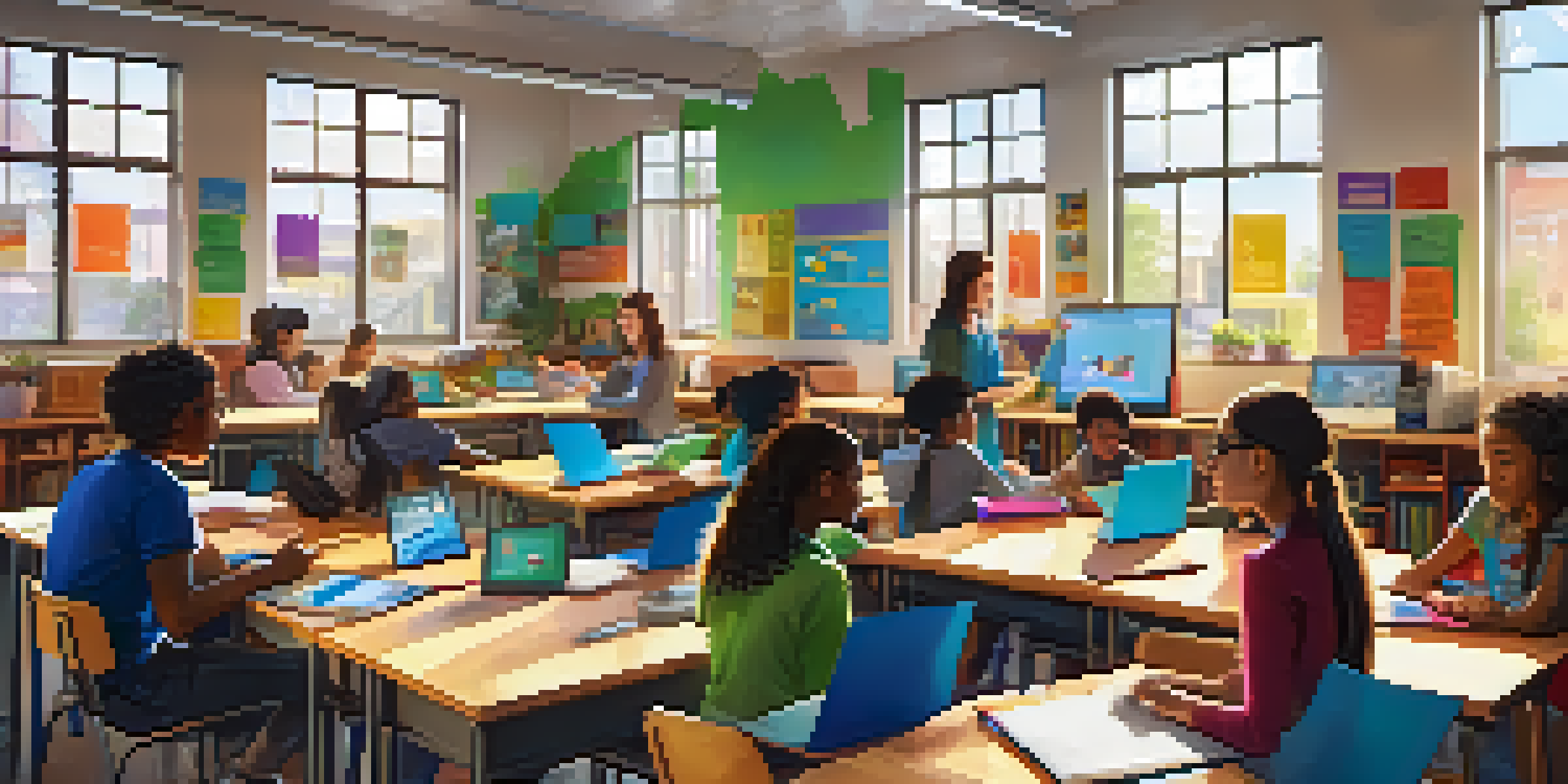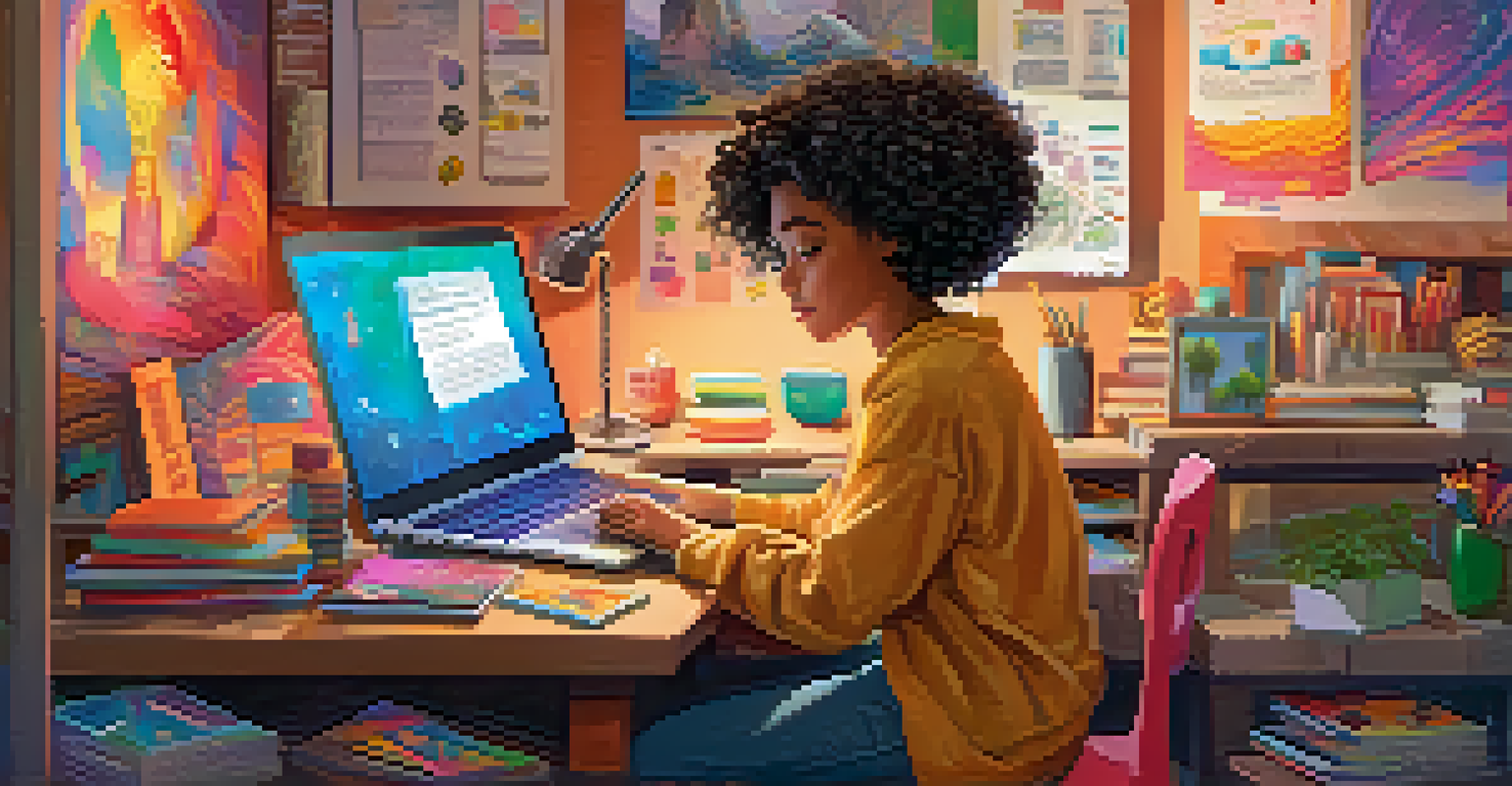The Role of Digital Storytelling in Enhancing Learning

Understanding Digital Storytelling in Education
Digital storytelling combines narrative with digital media to create engaging learning experiences. This approach allows students to express their ideas creatively while developing critical thinking skills. By weaving together visuals, audio, and text, learners can present complex concepts in a relatable way.
Digital storytelling allows students to become more engaged in their learning, helping them connect emotionally with the material.
Imagine a student using a video to narrate a historical event. Instead of just memorizing facts, they’re actively engaging with the material, making it more memorable. This blend of creativity and education not only enhances comprehension but also fosters a deeper emotional connection to the subject matter.
Incorporating digital storytelling into lessons can invigorate traditional educational methods. Teachers can leverage tools like podcasts, presentations, and interactive videos, making learning more dynamic and appealing to diverse learning styles.
Benefits of Digital Storytelling for Students
One of the most significant advantages of digital storytelling is its ability to boost student engagement. When learners create their own narratives, they take ownership of their education, leading to increased motivation. Engaged students are more likely to participate actively in discussions and collaborate with peers.

Additionally, storytelling can help students develop essential communication skills. By articulating their thoughts through a story, they learn to convey messages effectively and tailor their communication to different audiences. This skill is invaluable in both academic and professional settings.
Engagement Boosts Learning
Digital storytelling enhances student engagement, encouraging ownership of their education and active participation.
Moreover, digital storytelling encourages critical thinking. As students curate content and construct their narratives, they analyze information, evaluate sources, and make decisions about what to include. This process fosters a deeper understanding of the subject matter and equips them with problem-solving skills.
Enhancing Creativity Through Digital Narratives
Digital storytelling provides a platform for students to unleash their creativity. By integrating various media elements, they can experiment with storytelling techniques and express their unique voices. This freedom to create can lead to innovative ideas and perspectives.
The ability to tell stories is one of the most important skills a student can develop in today’s world.
For example, a science class could have students create a documentary about environmental issues, blending facts with personal anecdotes. This approach not only makes the learning process enjoyable but also allows students to connect their creativity with real-world challenges.
Furthermore, creative expression through storytelling can bolster self-confidence. As students share their stories, they receive constructive feedback, which encourages them to refine their skills and embrace their creative identities.
Fostering Collaboration Among Learners
Digital storytelling is not just an individual activity; it promotes collaboration among students. Working in groups to create a story encourages teamwork and communication, essential skills in today’s interconnected world. Students learn to listen to each other's ideas and build upon them.
Consider a project where students collaborate to produce a short film on a literary theme. This joint effort not only enhances their storytelling but also teaches them how to negotiate roles and responsibilities, preparing them for future group projects in their careers.
Fosters Collaboration Skills
Working together on storytelling projects cultivates essential teamwork and communication skills among students.
Moreover, collaboration through digital storytelling fosters a sense of community within the classroom. Students become more invested in each other’s success, creating a supportive learning environment where everyone can thrive.
Utilizing Technology for Storytelling in Learning
The rise of technology has revolutionized digital storytelling in education. With access to various tools and platforms, students can create and share their stories with ease. From simple apps to complex editing software, the possibilities are endless.
For instance, platforms like Adobe Spark and Canva allow students to design visually appealing presentations, while tools like WeVideo enable them to produce videos effortlessly. This accessibility empowers all students, regardless of their technical background, to participate in digital storytelling.
Additionally, technology facilitates the sharing of stories beyond the classroom. Students can publish their work online, reaching a wider audience and receiving feedback from peers around the globe, which enriches their learning experience.
Assessing Learning Through Digital Storytelling
Digital storytelling serves as an effective assessment tool, allowing educators to evaluate student understanding in a creative way. Instead of traditional tests, teachers can assess students based on their storytelling projects, which often reflect a deeper grasp of the subject matter.
For instance, a teacher might ask students to create a digital story that illustrates their understanding of a scientific concept. This project would require them to synthesize information and demonstrate their knowledge creatively, offering insights into their learning process.
Creative Expression in Learning
Digital storytelling provides a unique platform for students to express their creativity while deepening their understanding of subjects.
Furthermore, storytelling assessments can be more inclusive. They cater to different learning styles and abilities, providing opportunities for all students to showcase their strengths and understandings in a manner that resonates with them.
Challenges and Considerations in Digital Storytelling
While digital storytelling offers numerous benefits, it also comes with challenges that educators must navigate. One significant concern is ensuring that all students have equal access to technology. Disparities in resources can hinder some students from participating fully in digital storytelling projects.
Additionally, the learning curve associated with new technologies can be daunting. Educators need to provide adequate training and support to help students become comfortable with the tools and platforms they will use. This investment in training can make a substantial difference in the success of storytelling initiatives.

Finally, teachers should be mindful of balancing creativity with educational objectives. While it’s essential to encourage creative expression, the primary goal remains to enhance learning. Finding the right balance ensures that storytelling projects are both enjoyable and educational.